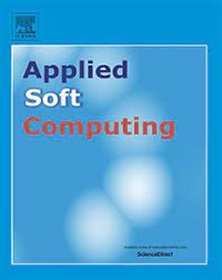Intra and inter-series pattern representations fusion network for multiple time series forecasting
IF 7.2
1区 计算机科学
Q1 COMPUTER SCIENCE, ARTIFICIAL INTELLIGENCE
引用次数: 0
Abstract
Multiple time series (MTS) can comprise data collected from various wireless sensor networks in the actual application, and each source provides a distinctive pattern. Most existing neural network methods attempt to model the patterns of individual time series by training a global model using the entire dataset, suffering from insufficient ability to consider the differences among source patterns and lowering the predictability. To address this limitation, we propose the Multiple Time Series Pattern Representation Network(MTS-PRNet), a unified framework consisting of two modules to forecast multiple time series from diverse sources. The first is the intra-series correlation learning module, which explicitly learns the temporal dependencies of time series. The second is the inter-series discriminative representation learning module that learns shapelets as discriminative representations to capture shared features among series. By integrating the covariates map generated by the second module, both intra and inter-series characteristics are captured to provide transferable guidance for increasing predictability. Experiments conducted on 9 datasets verify that our model achieves state-of-the-art performance. In particular, we carry out an ablation study to validate the effectiveness of discriminative representations.
求助全文
约1分钟内获得全文
求助全文
来源期刊

Applied Soft Computing
工程技术-计算机:跨学科应用
CiteScore
15.80
自引率
6.90%
发文量
874
审稿时长
10.9 months
期刊介绍:
Applied Soft Computing is an international journal promoting an integrated view of soft computing to solve real life problems.The focus is to publish the highest quality research in application and convergence of the areas of Fuzzy Logic, Neural Networks, Evolutionary Computing, Rough Sets and other similar techniques to address real world complexities.
Applied Soft Computing is a rolling publication: articles are published as soon as the editor-in-chief has accepted them. Therefore, the web site will continuously be updated with new articles and the publication time will be short.
 求助内容:
求助内容: 应助结果提醒方式:
应助结果提醒方式:


